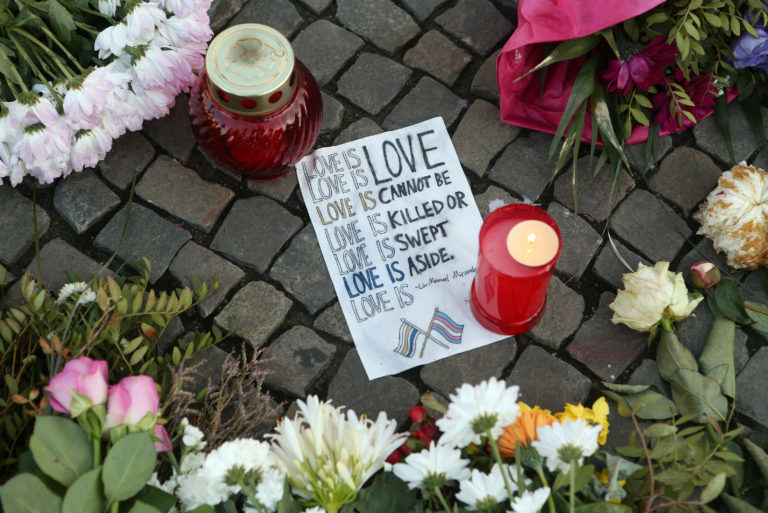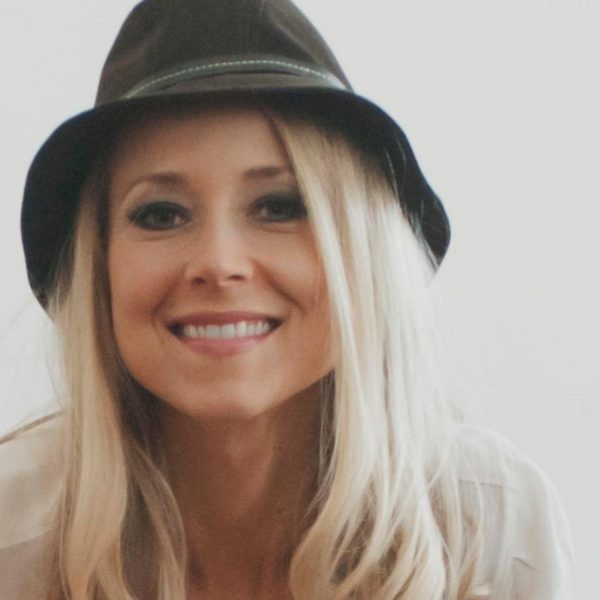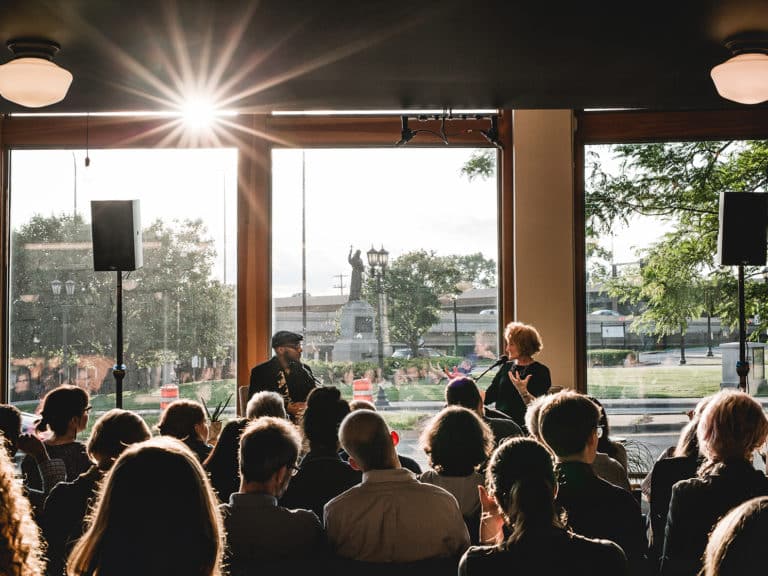
A makeshift memorial for the victims of Orlando in front of the United States embassy in Berlin, Germany cites lines from Lin-Manuel Miranda's sonnet that he delivered during his acceptance speech at the Tony Awards. Image by Adam Berry/Getty Images, © All Rights Reserved.
The Data of Tragedy and The Province of Art
As a writer who merges current events and social imperatives with artistry and craft, I’ve thought a lot about the ways in which art, fact, and even activism might join forces. Lin-Manuel Miranda’s acceptance speech during the Tony Awards sparked a new awareness: It’s not just the media industry but the media consumer who would do well to harness the power of creativity.
The awards ceremony took place hours after the mass killing at Pulse, a gay nightclub in Orlando, Florida. Miranda, the creator of Hamilton and the most celebrated man on Broadway right now, found himself rising to accept awards while flags were being lowered in mourning. In that moment, he was a celebrity and a man grappling with the day’s news like the rest of us. He met the enormity of the moment by infusing an acceptance speech with a 16-line sonnet:
My wife’s the reason anything gets done.
She nudges me towards promise by degrees.
She is a perfect symphony of one.
Our son is her most beautiful reprise.
We chase the melodies that seem to find us
Until they’re finished songs and start to play.
When senseless acts of tragedy remind us
That nothing here is promised, not one day
This show is proof that history remembers.
We live through times when hate and fear seem stronger.
We rise and fall, and light from dying embers
Remembrances that hope and love last longer.
And love is love is love is love is love is love is love is love;
Cannot be killed or swept aside.
I sing Vanessa’s symphony; Eliza tells her story.
Now fill the world with music, love, and pride.
Miranda’s sonnet, now widely shared, was not just a poem for poetry’s sake. This was a poem on a mission. It begins with a tribute to his family but then expands that intimate message to a public, social declaration: Art has the power to remind us that, beyond the horrifying events spanning human history, the unassailable force of love abides.
It’s not uncommon for celebrities to make political statements during moments in the spotlight. Miranda went beyond the usual declarative argument or emotional plea, though. As he did with his historical musical Hamilton, he used an art form to convey a message that is at once timely and timeless.
His poem was news commentary, of sorts, in that it included a statement of solidarity with the recently victimized LGBTQ community. The place he wrote it from, however, where the specific becomes transcendent metaphor, is the province of art.
Just a couple days later, Patience Carter, a 20-year-old survivor who was inside the club the night of the attack, described her experience before television cameras — by reading a poem she’d written in her hospital bed:
The guilt of feeling grateful to be alive is heavy.
Wanting to smile about surviving but not sure the people around you are ready.
As the world mourns the victims killed and viciously slain
I feel guilty about screaming about my legs in pain because I could feel nothing.
Like the other 49 who weren’t so lucky to feel this pain of mine
I never thought in a million years that this could happen.
I never thought in a million years that my eyes could witness something so tragic.
Look at the souls leaving the bodies of individuals
Looking at the killers machine gun throughout my right peripheral
Looking at the blood and debris covered on everyone’s faces
Looking at the gunman’s feet, under the stall as he paces.
The guilt of feeling lucky to be alive is heavy.
It’s like the weight of the oceans walls uncontrolled by levees.
It’s like being drugged through the grass with a shattered leg and thrown in the back of a Chevy.
It’s like being rushed to the hospital and told you’re going to make it,
When you laid beside individuals whose lives are brutally taken.
Had she been inspired by Miranda’s speech at the Tonys? I don’t know. I do know that I felt relieved to receive a personal reflection on a global news event that was at once poetic and true — a dignified contrast to the news media’s race to ratings and numbers with bellicose talking heads. Like Miranda, Carter cried. While devastated by the hard news story of 49 people murdered and 53 wounded, and a gunman willing to die for hatred, I myself hadn’t cried until I watched this young woman read her poem about the guilt of having survived.
In this hyper-connected era of the 24-hour news cycle, our bodies rarely separated from devices notifying us of events across the globe, we’ve mastered the dissemination and intake of information. We do it together every day as ritual, social media providing the means to share and discuss. Some news stories, however, are so big they require more than online comment fields for us to process.
Familiar voices step in at such moments: the president with a televised address intended to rouse collective catharsis, religious leaders pointing to instructive passages in sacred texts, even late-night talk show hosts inviting much-needed laughter through monologues that satirize the day’s events. While important, these amount to yet more information received, when what so many of us need is to be heard ourselves, even though we’re heard more than ever, in a sense, in hashtagged social media posts.
But I’m talking about a form of communication that transcends banter or debate. It is less concerned with parsing information than with conveying experiential truth. It represents feeling — a dimension that cannot be argued with. That’s creative expression, and it’s available to all of us, whether Tony winners or trauma survivors recovering in hospital beds.
In my twenties, I worked as a development director for a grassroots nonprofit that delivers social services to at-risk teens by employing them to create public art. Most of the kids there don’t think of themselves as artists when they’re hired, but soon they’re painting images that convey their inner worlds and often painful lives. Many of my creative professional friends lead writing, visual arts, and theater workshops in prisons, women’s shelters, and other places where the need for catharsis is severe. America as a whole, facing its own traumas, could similarly use a sort of art therapy.
What I’m imagining is so far from the current media paradigm that I can’t yet see it. Is it a platform that exists for sharing original stories, poetry, and illustrations reflecting on the news of the day? Is it an integration of that concept into the response fields of major news outlets?
Whatever it may be, it involves artistic response merging with our steady stream of depressing news reports and partisan diatribes, in part, to process the overwhelming data of tragedy. One result of such an experiment would surely be that we’d see just how badly we’re hurting as a country. I bet we’d also see revealed, though, how full of love we miraculously remain, and how well equipped we are to create a less tragic world.

